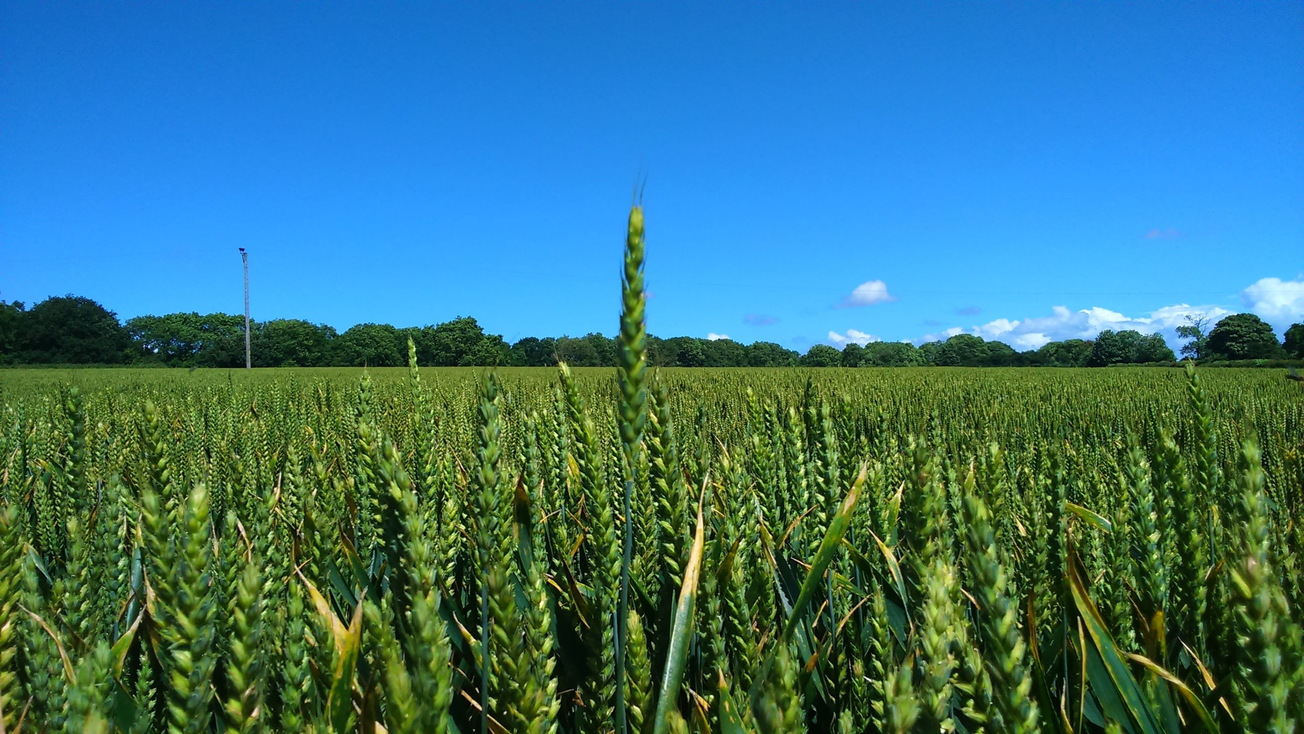By Dan Sarkar, Third Year, Chemistry
After the worst wheat harvest the UK has seen in 40 years, an interdisciplinary group of Bristol University researchers are going against the grain by pioneering a new way of increasing crop yields using nanoparticles.
There will be an extra 2.5bn mouths to feed globally by 2050. With droughts and poor harvests becoming more common as a result of climate change, the art of maximising crop yields is fast becoming the best way to prevent a global food crisis in the near future.
Biotechnology has been portrayed as the most viable solution for decades, however with scrutiny and reluctance from the public to welcome genetically modified products on to supermarket shelves, scientists at the University of Bristol are providing an alternative route to solving this problem.

In a collaborative study conducted by the Schools of Chemistry, Biological and Life Sciences, researchers used a new type of nanoparticle to increase the amount of light that plants can turn into energy, and subsequently increase grain yields in a variety of wheat used ubiquitously around the world.
These carbon-based nanoparticles, coined ‘carbon dots’, can be as small as a nanometre in size – a million times smaller than a millimetre. By combining the carbon dots with glycan, a type of carbohydrate, the carbon dots can be absorbed by plants much more effectively, allowing as much as an 18% increase in grain yield in Triticum Aestivum, which constitutes 95% of all wheat cultivated worldwide. They also benefit from being naturally fluorescent, making their uptake easily monitored through a microscope.
Carbon dots benefit from being both renewable and low-cost, as well as being completely non-toxic to humans
These processes can be overcome using genetic modification or enzymes, but carbon dots offer another solution to this ever-increasing global issue. With the public still being quite wary of genetic modification as a whole, the study has opened up a wealth of opportunity for research into non-biological ways to increase crop yields that are commercially viable. Carbon dots benefit from being both renewable and low-cost, as well as being completely non-toxic to humans.
The mass of the grain-bearing part of the plant was 18% greater when grown with carbon dots, and the number of seeds produced increased by 12%. The researchers also observed a decrease in the level of excess energy dissipated by the plants when treated with the nanoparticles, along with an increased rate of carbon dioxide passage through the plant itself, increasing the rate of photosynthesis substantially.
The mass of the grain-bearing part of the plant was 18% greater when grown with carbon dots
The reason for this dramatic increase in crop yield is due to the intricate mechanisms behind photosynthesis. Plants naturally absorb more light than they can safely harness, which can lead to the formation of harmful oxidants that damage their tissue.
Thankfully, plants have in-built reactions that dissipate this excess energy and prevent the formation of these harmful molecules; however they limit how large a plant can grow. Other scientists have tweaked certain parts of these reactions to try and redirect excess energy into plant growth, but this is the first study to achieve significant results using nanoparticles.

The implications of this study could be huge, as the technique could be easily adapted for use in a range of other industries that utilise photosynthesis, such as producing textile production and biofuels.
Fuels like bioethanol or biodiesel have been projected to provide just under 30% of the world’s transportation fuel by 2050, compared to just 2% in 2011 . Incorporating carbon dots into plant soil used to grow fuel crops would provide both larger yields, and a buffer for potential poor harvests in the future.
If nanoparticles like carbon dots are used on a larger scale, they could play a major part in relieving the high levels of stress on industries in the future to provide for a much larger populace.
Bristol University carrying out research into what makes the perfect cider – and is asking for your help
Bristol-led research investigates treatment of mitochondrial diseases using gene editing
As the effects of climate change become more and more prevalent, this new avenue for photosynthetic research will hopefully provide the renewable solution we are looking for.
Featured Image: Epigram / Edward Deacon








